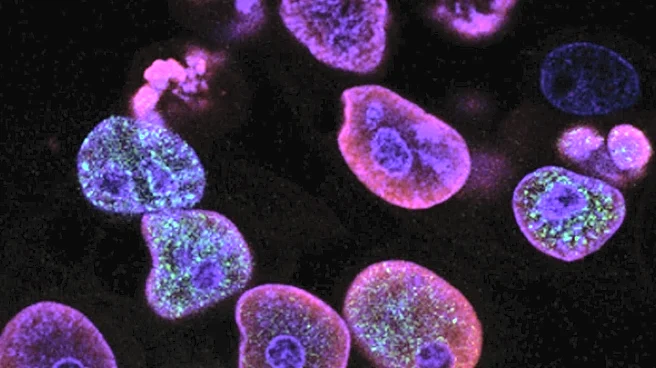What's Happening?
A recent study has introduced a novel spatial framework to validate gene expression profiling in bladder cancer, focusing on the effects of arsenic exposure. The research, conducted using multiplex FISH
and AI-powered digital pathology, aims to map gene alterations within bladder tumor tissues. The study highlights the prognostic relevance of a three-gene model (AKTIP, HLA-DQA1, NKIRAS2) for stratifying bladder cancer progression. This model may offer insights into spatial gene expression patterns, potentially aiding future risk stratification studies and personalized therapeutic research. The research utilized bladder cancer samples from arsenic-exposed Asian populations to minimize ethnicity-related confounders, enhancing the biological relevance of the findings.
Why It's Important?
This development is significant as it advances the field of precision medicine, particularly in cancer treatment. By identifying specific gene expression patterns associated with bladder cancer, the study could lead to more personalized treatment plans, improving patient outcomes. The integration of AI and digital pathology in this research underscores the growing role of technology in medical diagnostics. The findings could influence therapeutic decisions, such as predicting immunotherapy responses, thereby impacting clinical practices and patient care strategies. This approach also highlights the importance of considering environmental factors, like arsenic exposure, in cancer research.
What's Next?
The study's findings are preliminary and require further validation through large-scale studies. Future research will likely focus on expanding the sample size and exploring the applicability of the three-gene model across diverse populations. The integration of this spatial framework into clinical settings could revolutionize how bladder cancer is diagnosed and treated, potentially leading to the development of new diagnostic tools and treatment protocols. Stakeholders in the medical and research communities may respond by investing in similar studies to explore the broader applications of this technology.
Beyond the Headlines
The study raises ethical considerations regarding the use of human tissue samples and the need for informed consent in biomedical research. It also highlights the potential for AI to transform medical diagnostics, raising questions about data privacy and the role of technology in healthcare. The focus on arsenic exposure underscores the intersection of environmental health and cancer research, suggesting a need for policies addressing environmental carcinogens.











